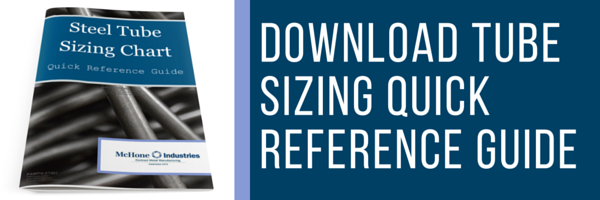
As a softer metal that still boasts plenty of strength, aluminum is a preferred choice in fabrication and production.
But welding aluminum can be tricky.
If your application requires aluminum welding fabrications, your first question should be "What's the best aluminum for welding?"
We have an answer for that.
The Best Aluminum Alloys for Welding
Just like stainless steel, aluminum comes in different alloys and grades. Some are easily welded, which saves on skilled labor and defect costs. Others require more expertise, or shouldn't be welded at all.
There are four main aluminum alloys used as base materials:
- 1XXX
- 3XXX
- 5XXX
- 6XXX
4XXX alloys are highly weldable, but they're more often used as filler materials for other grades. You’ll see this grade included
Let’s take a closer look at each alloy and its weldability:
1XXX
The 1XXX series of aluminum alloys is as close to pure aluminum as you'll get. It's easy to weld using filler 1100 and 4043. This type of aluminum is low-strength, but highly corrosion-resistant. It's most commonly used to conduct electricity or transport chemicals.
3XXX
This series of aluminum is alloyed with manganese. They're easy to weld, usually with 4043 or 5356 as fillers. 3XXX is most commonly used in heat exchangers, air conditioners, and similar applications. This alloy series is only medium-strength, so it doesn't work well in structural applications. However, it's great for bending and forming.
5XXX
5XXX is the #1 one choice for weldability. This series is alloyed with magnesium, and is very high-strength. However, due to the high amounts of magnesium, they should not be welded with 4XXX filler materials. 5XXX aluminums are used in structural and heavy duty applications: shipbuilding, bridges, buildings, etc.
6XXX
The 6XXX series is alloyed with magnesium and silicon. This series is used most widely for welding fabrications. 6XXX alloys are high-strength and respond well to heat treatment. They're commonly extruded, and used as structural components.
Aluminum Alloys to Steer Clear of in Welding
Before we deem which aluminum alloy is best for welding, let’s look at which ones aren’t.
While aluminum alloys are weldable, not all are best suited for it. In our experience, there are two grades to stay away from:
- 2XXX
- 7XXX
We’ll explain why:
2XXX
This metal is considered a wrought aluminum alloy, as it contains copper. Other alloying elements, such as nickel, titanium, and manganese, are often added to enhance strength.
Because of its chemical composition, 2XXX is susceptible to cracking when welded. An extremely strong aluminum alloy, 2XXX is frequently used in aerospace applications.
7XXX
Another wrought aluminum alloy, 7XXX is extremely strong as well. Like 2XXX, it’s used in aerospace applications.
Zinc is added to 7XXX for improved strength. Similar to the elements added to 2XXX, zinc makes 7XXX also vulnerable to cracking during welding. In addition, zinc also makes 7XXX less resistant to corrosion.
Should your project require using 2XXX or 7XXX, make sure to hire a highly experienced welder who knows the proper welding technique for both alloys.
So What’s the Best Aluminum Alloy for Welding?
Overall, we like the 5XXX alloys for welding. But, we do a lot of work for high-strength heavy duty industries, so we might be biased.
A high-strength alloy, 5XXX aluminums are easily welded. Components made with this material, such as auto parts and plates, are strong and durable.
6XXX is a close runner up. While the most common aluminum alloy used in welding, it can crack when exposed to extreme heat for too long.
What to Know Before You Weld Aluminum
Though an easier metal to form and bend, the welding process for aluminum is challenging.
Unlike popular metals, such as stainless steel or carbon steel, aluminum:
- Is less malleable steel
- Has higher thermal conductivity
- Requires more skill to weld
Without paying close attention to the aluminum alloy you’re welding, you run the risk of wasting time and money.
As always, your project and application will determine which material is best for you. But if you're looking for high weldability, choose an aluminum alloy in the 5XXX or 6XXX series.
(Editor's note: This article was originally published in 2017 and was recently updated.)


